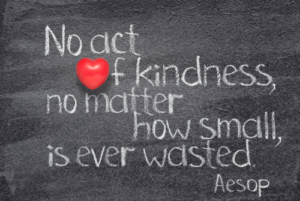
Non-Judgmental Mindfulness: The Key To Happiness
Our daily lives are often filled with judgment. When I say Judgment, I don’t necessarily mean a negative label. I mean, any label. What is

Our daily lives are often filled with judgment. When I say Judgment, I don’t necessarily mean a negative label. I mean, any label. What is

The purpose of this article is to help you be more aware of the nature of your smile through a simple mindfulness practice. Here are

In the hustle and bustle of your daily life, do you find yourself always on the run? Constantly moving from one place to another or from one

Many of us encounter moments in life where forgiveness feels impossible. We might hold onto contempt or resentment towards someone, struggling to understand their actions

Be Kind. Not just because it makes you look good, but primarily because it makes you ‘feel’ good. I would understand kindness as helping another person, in any way you can, without expecting anything in return. Kindness is not defined in magnitude, but only the purity of intent. Be it giving tons of money to charities or helping an old person cross the street – it’s all equally important and significant.

We specialize in combining psychotherapy with deep wellness practices like mindfulness and meditation and creating a customized mental health plan for individuals and organisations.
We specialize in combining psychotherapy with deep wellness practices like mindfulness and meditation and creating a customized mental health plan for individuals and organisations.

A young woman from another country moved with her family to live for one year in a town near the monastery. When, in the course of the year she discovered the monastery, she would periodically visit to have discussions with the Abbess. The Abbess introduced her to meditation, which became very meaningful for the young woman.
When the family’s year-long stay was drawing to an end, the young woman asked the Abbess, “In my country there is no Buddhism and no one has even heard about meditation. How can I continue to learn and deepen the practice you have started me on?”
The Abbess said, “When you return home ask far and wide for who, among the wise people, is recognized as having the greatest ability to listen. Ask that person to instruct you in the art of listening. What you learn about listening from such a person will teach you how to further your meditation practice.
― Gil Fronsdal, A Monastery Within: Tales from the Buddhist Path